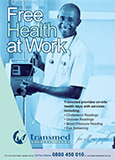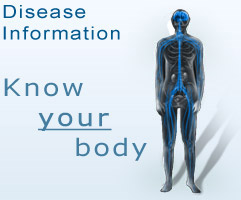Dysrhythmia
What is a dysrhythmia?
A dysrhythmia is a change in the rhythm of your heartbeat. When the heart beats too fast, it's called tachycardia. When it beats too slowly, it's called bradycardia.
A dysrhythmia can also mean that your heart beats irregularly (skips a beat or has an extra beat). At some time or another, most people have felt their heart race or skip a beat. These occasional changes can be brought on by strong emotions or exercise. They usually aren't a cause for alarm. Dysrhythmia that occurs more often causes symptoms that may be more serious. Please discuss this with your doctor.
Causes
The heart has four compartments or chambers. The walls of the heart squeeze together (contract) to push blood through the chambers. The contractions are controlled by an electrical signal that begins in the heart's natural "pacemaker" (called the sinoatrial node). The rate of the contractions is influenced by nerve impulses and hormones in the blood. A problem in any of these can cause a dysrhythmia.
Minor dysrhythmias may be caused by excessive alcohol use, smoking, caffeine, stress or exercise. The most common cause of dysrhythmias is heart disease, particularly coronary artery disease, abnormal heart valve function and heart failure. However, dysrhythmias can occur due to a known reason.
Symptoms
Contact your doctor if you have any of the following symptoms (especially if you have heart disease or have had a heart attack):
- palpitations or rapid thumping in your chest;
- feeling tired or light-headed;
- passing out;
- shortness of breath; and/or
- chest pain.
Is a dysrhythmia serious?
In most people, dysrhythmias are not dangerous. A small number of people, however, have dysrhythmias that are dangerous and require treatment. Dysrhythmias are also more serious if you have other heart problems. In general, dysrhythmias that start in the lower chambers of the heart (called the ventricles) are more serious than those that start in the upper chambers (called the atria). Your doctor will advise you about the type of dysrhythmia you have and whether you need treatment.
Diagnosis
Your doctor will ask if you have any of the symptoms listed above (see symptoms). Your doctor may also do some tests. One of these tests is an electrocardiogram (ECG), which is a recording of the electrical activity of the heart over time, produced by an electrocardiograph.
In addition, your doctor may ask you to walk on a treadmill while he or she monitors your heart, or may want to monitor your heart while you do your daily activities. One way to do this is to wear a device called a Holter monitor, which continuously records your heart's rhythms for 24 hours. If your doctor wants to monitor your heart for more than 24 hours, he or she might recommend an event-recorder, a machine that records samples of your heart's rhythms. It can be worn for a couple of days or longer. Other tests, called electrophysiologic studies, may also give your doctor information about your heart.
Types of dysrhythmias
Atrial fibrillation: The heart beats too fast and irregularly. This type of dysrhythmia requires treatment and can increase your risk of stroke.
Paroxysmal atrial tachycardia: The heart has episodes when it beats fast, but regularly. This type of dysrhythmia may be unpleasant but is usually not dangerous.
Ectopic beats: The heart has an extra beat. Treatment usually is not needed unless you have several extra beats in a row and/or other problems with your heart (such as heart disease or congenital heart failure).
Ventricular tachycardia and ventricular fibrillation: The heart beats too fast and may not pump enough blood. These types of dysrhythmias are very dangerous and need immediate treatment.
Treatment
Treatment depends on the type of dysrhythmia you have. Some mild dysrhythmias require no treatment. Other dysrhythmias can be treated with medicines. If another health problem is causing the dysrhythmia, treatment is aimed at taking care of that problem. In more serious cases, other treatments are available:
- An artificial pacemaker is an electronic device placed under the skin on the chest. It helps the heart maintain a regular beat, especially when the heart beats too slowly.
- Cardiac defibrillation (very brief electric shock) can be used to stop an abnormal rhythm and restore a normal one.
- Surgery can correct certain types of dysrhythmias. For example, dysrhythmias caused by coronary artery disease may be controlled by bypass surgery. When a dysrhythmia is caused in a certain area of the heart, sometimes that part can be destroyed or removed.
Reference:
American Academy of Family Physicians
 TransmedBanner4.jpg)

